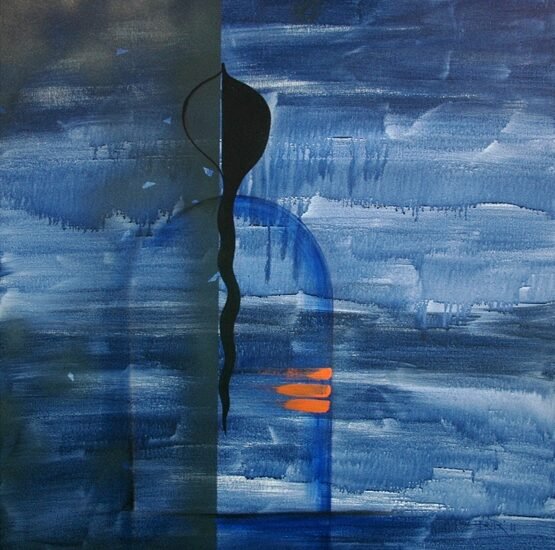Lord Shiva, the supreme deity of transformation, destruction, and regeneration in Hinduism, has inspired generations of artists across centuries. His enigmatic persona, often depicted in powerful and evocative paintings, serves as a medium for both spiritual expression and artistic brilliance. Whether it is the fierce Tandava dance, the meditative ascetic in the Himalayas, or the benevolent protector of devotees, Lord Shiva’s imagery resonates deeply with seekers and connoisseurs alike.
In the vast realm of Indian paintings, Lord Shiva’s representations transcend mere religious symbolism, offering a nuanced exploration of mythology, philosophy, and aesthetic mastery. This article delves into the significance of Lord Shiva paintings, their evolution in Indian art, and how collectors and enthusiasts can engage with these masterpieces in a meaningful way.
The Symbolism and Iconography of Lord Shiva Paintings
Each element in Lord Shiva’s imagery holds profound meaning, shaping the artistic interpretations across different traditions. Some key elements include:
- Third Eye: Represents higher consciousness and the ability to destroy evil.
- Trishul (Trident): Symbolizes the three fundamental aspects of existence—creation, preservation, and destruction.
- Damru (Drum): Represents cosmic rhythms, the vibrations that create and dissolve the universe.
- Crescent Moon: Signifies control over time and emotions.
- Blue Throat (Neelkanth): A testament to his sacrifice, symbolizing the containment of negative forces.
- Ganga Flowing from Hair: Represents the divine flow of purity and wisdom.
Painters often emphasize these elements to convey deeper narratives, blending mythology with artistic expression.
Evolution of Lord Shiva Paintings in Indian Art
1. Ancient and Classical Depictions
The earliest representations of Shiva date back to the Indus Valley Civilization, where proto-Shiva figures in yogic postures have been discovered. Over time, classical Indian art refined these depictions:
- Ajanta and Ellora Murals: Show early frescoes of Lord Shiva in grandiose settings.
- Pahari and Rajput Paintings: Focused on mythological stories, using rich colors and intricate details.
- Tanjore and Mysore Paintings: Featured gold leaf embellishments, exuding a divine aura.
2. Modern and Contemporary Styles
In contemporary times, Lord Shiva paintings have taken diverse forms:
- Abstract and Expressionist Renderings: Inspired by modern artistic movements, these depictions focus on energy and emotions rather than traditional iconography.
- Digital and Pop Art Interpretations: Infusing Lord Shiva’s imagery with vibrant hues and experimental compositions, appealing to younger audiences.
- Minimalist and Calligraphic Designs: Where subtle strokes and symbolic motifs convey his presence powerfully.
Choosing the Right Lord Shiva Painting: A Collector’s Guide
For collectors and spiritual enthusiasts, acquiring a Lord Shiva painting is not just about aesthetics but also about energy and meaning. Here are key considerations:
1. Artistic Style and Medium
- Traditional Paintings: Pahari, Tanjore, Madhubani, and Kalamkari styles offer rich heritage.
- Contemporary Works: Look for acrylic, oil, or digital reinterpretations that align with modern sensibilities.
- Mixed Media and Textured Art: Experimentation with materials like metal, wood, and fabric adds depth to the piece.
2. Color Palette and Symbolism
- Vibrant Reds, Golds, and Blues: Reflect cosmic energy and divine power.
- Monochrome or Sepia Tones: Evoke meditative and philosophical introspection.
- Earthy Hues: Represent a deep connection with nature and asceticism.
3. Placement and Ambience
- Meditation Spaces: A serene, meditative depiction of Shiva can enhance tranquility.
- Living Rooms and Offices: A dynamic Shiva painting (such as Nataraja) can symbolize power and inspiration.
- Art Galleries and Collector’s Displays: Limited edition prints or original works hold great value.
The Impact of Lord Shiva Paintings on Mind and Space
Lord Shiva paintings are more than just decorative pieces; they carry an energetic frequency that influences the ambiance of a space. When placed mindfully, these artworks:
- Promote Spiritual Growth: Encouraging mindfulness and higher consciousness.
- Enhance Aesthetic and Cultural Appeal: Blending tradition with artistic sophistication.
- Create a Focal Point: Drawing viewers into a meditative state or thought-provoking reflection.
Conclusion: Embracing the Divine Through Art
Lord Shiva paintings stand at the intersection of devotion and artistic ingenuity, offering a timeless connection to spirituality and culture. Whether through traditional Indian art forms or modern reinterpretations, these paintings serve as powerful conduits of inspiration, transformation, and transcendence.
For collectors, spiritual seekers, and art enthusiasts, engaging with Lord Shiva paintings is not just about owning a masterpiece but about embracing an eternal philosophy that continues to evolve through artistic expression. As we appreciate these works, we also honor the profound narratives and energies they encapsulate, allowing art to be both a visual delight and a spiritual guide.






